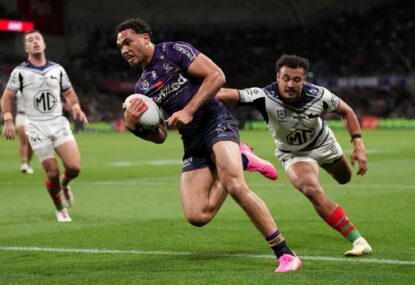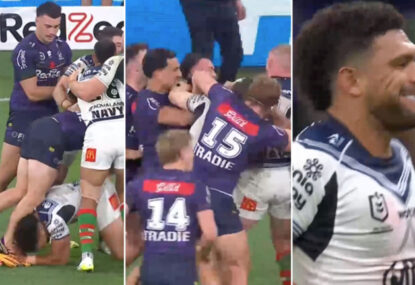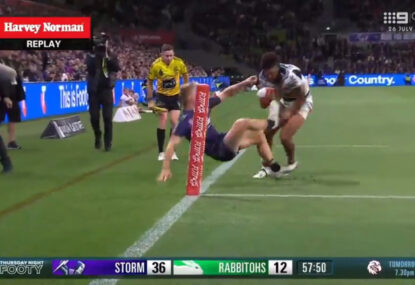The 2017 Rugby League World Cup came to an end on Saturday as Australia completed the double winning both the men’s and women’s competitions on home soil.
It draws the curtain on a brilliant tournament riddled with highlights from all 16 nations competing in the men’s and women’s tournaments.
Kangaroos break 40-year drought as they grind out England
Australia’s 6-0 win over England on Saturday night confirmed their world No.1 status in doing so, Australia became the first nation to win a World Cup on home soil in 40 years.
It had all the hallmarks of being a close game right from the onset with England’s defence holding up against Australia until the 14th minute when Michael Morgan put Boyd Cordner over the line.
There wasn’t too much else in the first half, both sides continuing to bash into each other with neither making any significant advances giving Australia a 6-0 lead at the break.
Michael Morgan looked to have scored early in the second half however, video referee Ben Thaler overturned the decision after it was ruled that Elliott Whitehead was obstructed by Cameron Smith, keeping the scores at 6-0.
Kallum Watkins nearly raced away to score late in the second half, stopped only by a Josh Dugan ankletap, saving what would have been a try.
In the end, England were unable to find a hail mary play as Australia held on for a tough win to go back-to-back.
Jillaroos hold off Kiwi Ferns to go back-to-back
Australia have overcome New Zealand to reclaim their second consecutive Women’s Rugby League World Cup winning 23-16 in Brisbane.
The Jillaroos were first to strike after Isabelle Kelly went over in the opening moments however, New Zealand dominated the Australians for most of the first half with a double to Honey Hireme and high completion rates. A late first half try to Caitlin Moran put the Jillaroos in front at the break, leading 12-10.
New Zealand came unstuck in the second half as poor discipline got the better of the visitors, Australia taking advantage to score two tries in five minutes through Isabelle Kelly and Elianna Walton.
The Kiwi Ferns showed no signs of giving up as Raecene McGregor showed a glimpse of brilliance to find the chalk as the game entered its final stages. In the end though, the Jillaroos were able to hold on with Caitlin Moran hitting the match-winning field goal to be crowned world champions.
Top Five Moments from the 2017 Rugby League World Cup
5. The luck of the Irish – Coming into the World Cup, Ireland were expected to struggle to even win a game but the Wolfhounds arrived in style to win two of their three group matches.
Led by Liam Finn and Louie McCarthy-Scarsbrook, the men from the Emerald Isles surprised many with an impressive 36-12 win over Italy in Cairns, nearly unseating the Kumuls in Port Moresby 14-6, and then earning a win in their final match against rivals Wales 34-6.
The Irish were left out of the final eight much to the dismay of many rugby league fans with Samoa, only managing to draw against Scotland, advancing to the quarterfinals.
4. Fiji beat New Zealand – You would have been thrown in the loony bin if you had said that a Fiji-New Zealand quarterfinal would be tryless. If you suggested Fiji might win, they’d throw away the key.
The Bati did just that in what was an ugly game but an entertaining one nonetheless triumphing 4-2 in a tryless encounter.

(NRLPhotos)
Fiji scored 168 points in the pool stage displaying their attacking prowess but showed they could hold up on defence against New Zealand.
Despite falling to Australia in the semifinals 54-6, there were plenty of positives for the Fijians who won four games in a row, the first time they have won consecutive matches in a World Cup campaign.
While they were unable to reach the final, the Bati have solidified their place among rugby league’s best.
3. Tonga beat New Zealand – Who would have thought that Tonga, a tiny island nation with a population just over 100,000, could compete with some of the best in the world?
Mate Ma’a have been a shining beacon for international rugby league and sent the rugby league world into raptures after their 28-22 win over New Zealand in Hamilton, launching them into the quarterfinals for the first time in their history.
The Tongan forward pack was outstanding with Jason Taumalolo and Andrew Fifita leading the way while Tuimoala Lolohea and Ata Hingano combined well in the halves as David Fusitu’a and Daniel Tupou monstered on the wing.
It was a comeback win for the ages, inspired by the pre-match cultural challenge, the match being the first time a tier two nation has defeated one of the big three in a World Cup.
2. Pride and passion – For all those that doubted the legitimacy of the Rugby League World Cup, the off-field celebrations silenced any naysayers proving that rugby league has a place in the hearts and minds of the sporting world.
The pride and passion was there to be seen. National anthems were belted out at full volume, hymns were sung in the stands for Tonga, drums were beating for Lebanon. The community embraced their national heroes by inviting the Lebanese to their family restaurants or by waving flags hysterically around the streets of New Zealand.
There was nothing greater though than the pre-match cultural challenge. The Fijian hymn was filled with emotion, so too the Samoan Siva Tau, Tongan Sipi Tau and New Zealand haka.
As good as the on-field product was, the pride and passion of players and fans alike made the 2017 Rugby League World Cup a true spectacle.
1. Australia overcome gallant England – Australia and England put on a battle for the ages in the World Cup final with the Kangaroos triumphing 6-0. It was a hard fought match right from the outset with neither side conceding any territory.
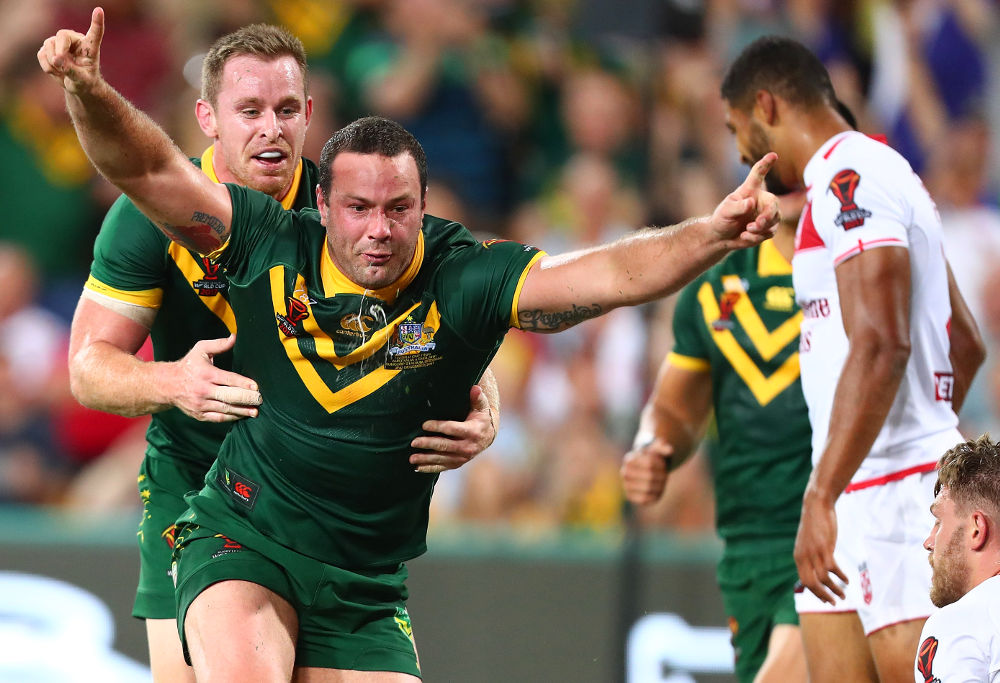
(Photo by Chris Hyde/Getty Images)
Both the Kangaroos and Lions were evenly matched throughout the whole 80 minutes, the green and gold only just managing to hold back a late England onslaught with a Josh Dugan ankle tap on Kallum Watkins saving what could have resulted in a try.
The final was the perfect way to end a brilliant tournament as both sides displayed class and execution.
Team of the tournament
1. Kevin Naiqama (Fiji) – Naiqama’s passion for the Fijian jersey was evident as he became an integral player in the Bati’s World Cup campaign. He took on the captaincy by leading from the front, shining at the back and scoring 3 tries for the tournament.
2. Jermaine McGillvary (England) – McGillvary was England’s best scoring the opening try of the tournament and continuing his form up until the final siren. The winger was always a threat to the opposition bagging 7 tries for the tournament, the third most of any player.
3. Kallum Watkins (England) – Combined well with Jermaine McGillvary proving lethal with every touch. He played a large part in helping McGillvary to score 7 tries for the tournament, bagging three of his own.
4. Taane Milne (Fiji) – Formed a strong right-wing attack with Suliasi Vunivalu scoring four tries for the tournament and setting up his partner-in-crime for nine. Was dominant both in attack and defence.
5. Valentine Holmes (Australia) – Holmes smashed records in six games for Australia. The winger scored more tries than any other player with 12, eclipsing Wendell Sailor’s 10-try haul in 2000. He broke the record for most tries scored in a World Cup match against Samoa with five meat pies before coming back a week later to score six against Fiji.
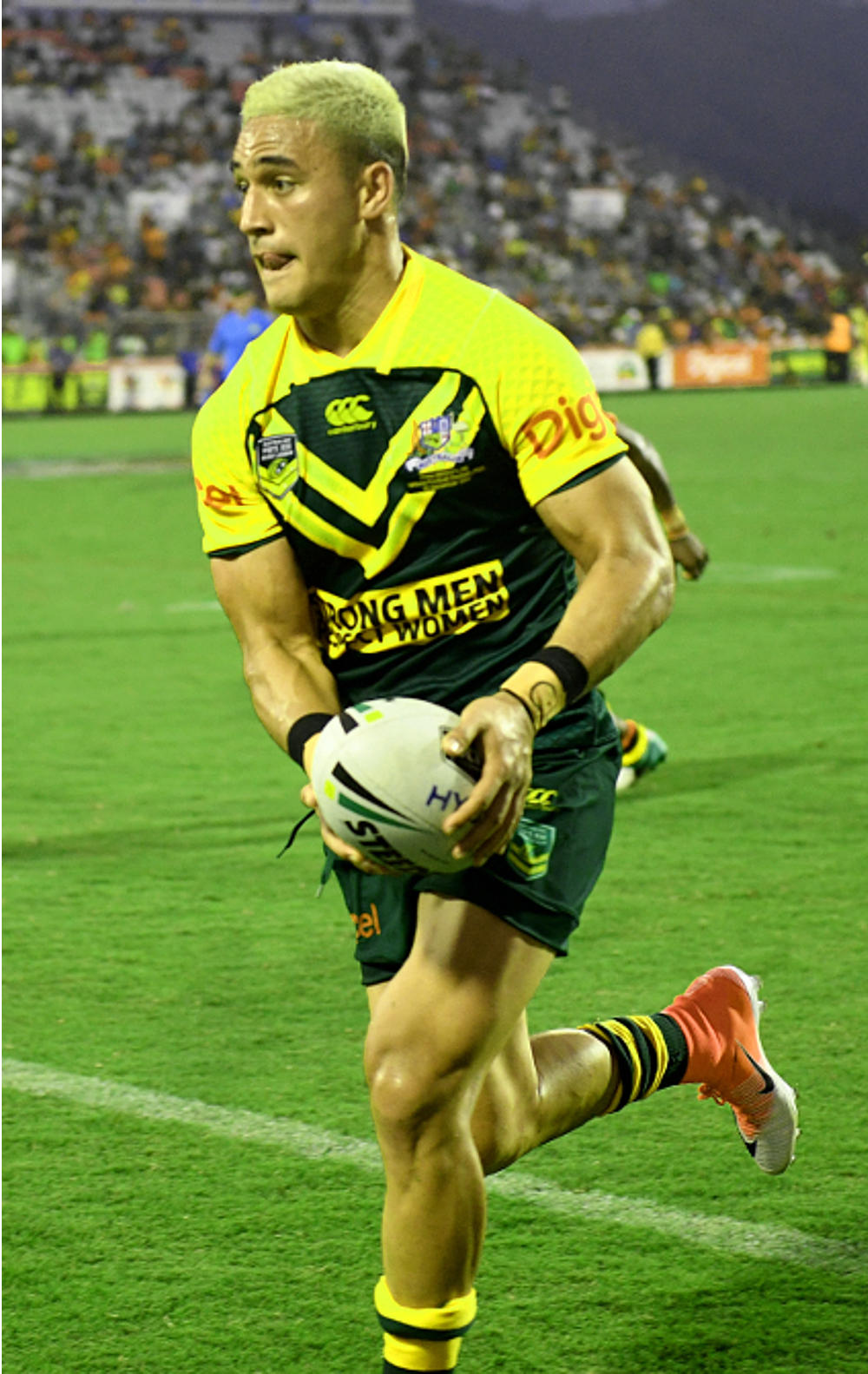
(Brendan Esposito / NRL Photos)
6. Michael Morgan (Australia) – Morgan played well on the left side for the Kangaroos, combining well with Valentine Holmes, Josh Dugan and Boyd Cordner. He capped off a brilliant season by leading Australia to the final and scoring two tries in his first World Cup.
7. Cooper Cronk (Australia) – Cronk provided structure to the Australian attack forming a great combination with Michael Morgan in five appearances. His kicking game was a cut above, helping the Kangaroos to World Cup victory.
8. Andrew Fifita (Tonga) – After his high-profile defection to Tonga, Fifita delivered helping Mate Ma’a to reach the finals for the first time, steering them to a semifinal finish. The prop forward was exceptional averaging 157 metres per game as well as 24 tackles in five appearances.
9. Cameron Smith (Australia) – Smith capped off a stellar 2017 season by guiding the Kangaroos to World Cup victory. The hooker proved why he is considered the world’s best player and a future Immortal, providing structure and composure to the Australian side.
10. James Graham (England) – Wearing his heart on his sleeve, James Graham left it all on the field. The British Bulldog was terrorising up front in six appearances for England averaging 141 metres and 33 tackles a game. Graham’s workrate was exceptional, forming the heart of the English forward pack.
11. Boyd Cordner (Australia) – Named man of the match in the World Cup final, Boyd Cordner took on a senior leadership role for the Kangaroos. The backrower found the line on two occasions from five appearances for Australia, putting in an enormous effort with 137 metres and 22 tackles a game.
12. Elliott Whitehead (England) – Whitehead was tireless playing for the full 80 in four games and going for 70 in another. The England star was mercurial defensively with a huge average of 42 tackles per match. He didn’t slack off in attack either with two line breaks, a try assist and an average of 84 metres.
13. Jason Taumalolo (Tonga) – If anyone had ever doubted Jason Taumalolo, the Tongan lock made sure to clear the air. Taumalolo was exceptional in his five appearances for Tonga cracking the 200-metre mark twice and averaging 196 metres, breaking the line on six occasions. His defensive workrate was nothing short of outstanding either with 19 tackles a game.
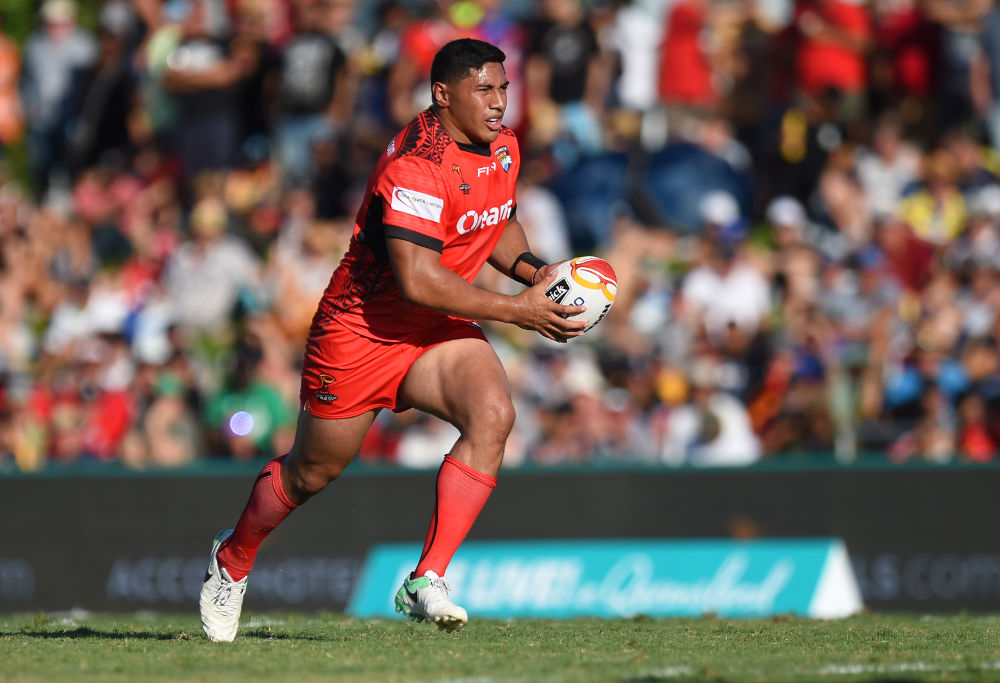
(NRLPhotos/Scott Davis)
14. Manu Ma’u (Tonga) – A Tongan workhorse in his five caps, Ma’u was a key player in Tonga’s charge to the semifinals. The backrower displayed his high workrate both on attack and in defense averaging 131 metres and 29 tackles a game.
15. Viliame Kikau (Fiji) – By far Fiji’s best forward, Kikau played for 80 minutes in all five of the Bati’s games scoring 3 tries. He did not shy away from the task making his presence felt with 165 metres a game as well as averaging 19 tackles on defence.
16. Nelson Asofa-Solomona (New Zealand) – Extremely effective off the bench, Asofa-Solomona was a shining light in an otherwise dour campaign for New Zealand. The giant backrower scored a try and set up another, averaging 141 metres in his four games and striking fear into the opposition.
17. Rhyse Martin (Papua New Guinea) – In four appearances for the Kumuls, Rhyse Martin announced himself as an elite backrower. He stood out for Papua New Guinea scoring two tries and having a hand in two more, also displaying his goalkicking skills and proving to be a workhorse cracking the 100-metre mark twice and averaging 29 tackles.
And just like that the 2017 season has come to an end. Only 74 days to go until the World Club Challenge. Bring it on!



































































































